The Story of Brooklyn's Lady Developers, Architects and Builders
Brooklyn’s first known female developer was Susanna Edith Cosey Russell, appearing on the scene in 1870.

Photos by Susan De Vries
In many people’s minds, the planning and construction of buildings is a man’s job. After all, in Western societies, it’s been thought of as a man’s job since people crawled out of caves and started building shelters. A man had the physical strength to fell trees, gather large stones, or climb to the top of a roof. It wasn’t possible or seemly for a woman to do that job. That’s just the way it was.
By the late 19th century, the Victorians were presiding over a world with very codified gender roles. But even then, things were beginning to change. Women began doing things that had always been “men’s work.” Sometimes it was due to necessity, but often it was because women were realizing that they were good at doing some of the things that men had claimed as their own. And since a woman’s place was supposed to be in her home, why shouldn’t she have opportunities to build or design some of them? Why couldn’t a woman be a developer or an architect?
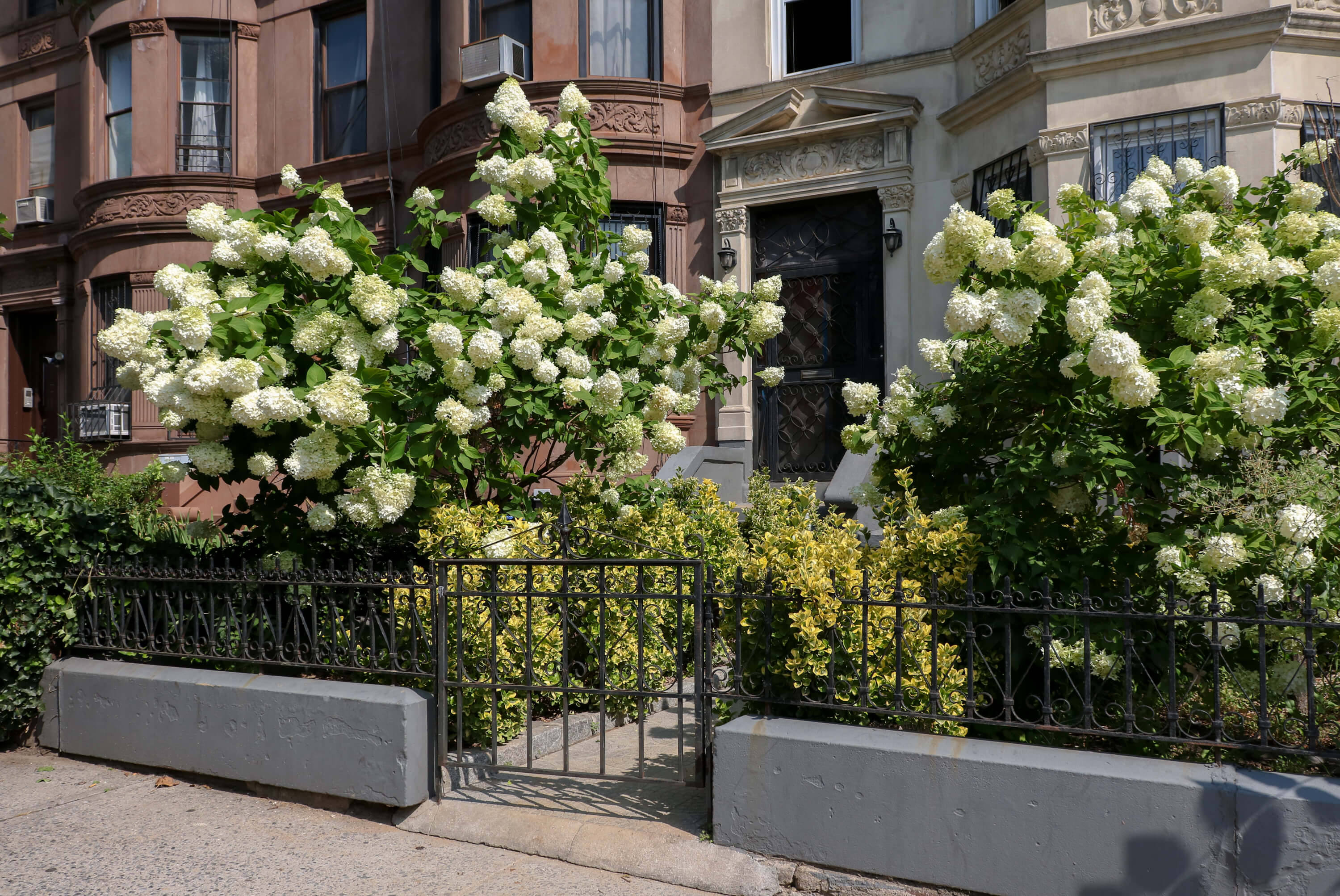
New York State had some of the country’s most progressive laws regarding a woman’s right to own property. An 1848 law prohibited the courts from seizing a woman’s property or assets if her husband should owe debt. The same law also prohibited the husband from appropriating his wife’s assets should he incur his own debt.
This law was enacted after the financial Panic of 1837, to prevent families from being made homeless or destitute by financial problems. It became a model for other states to follow. Husbands in business quickly realized that putting their business assets in their wives’ names was good policy. The courts could not touch them and, being proper Victorians, creditors were loath to bring a respectable woman before the courts. It didn’t make the creditor look good.
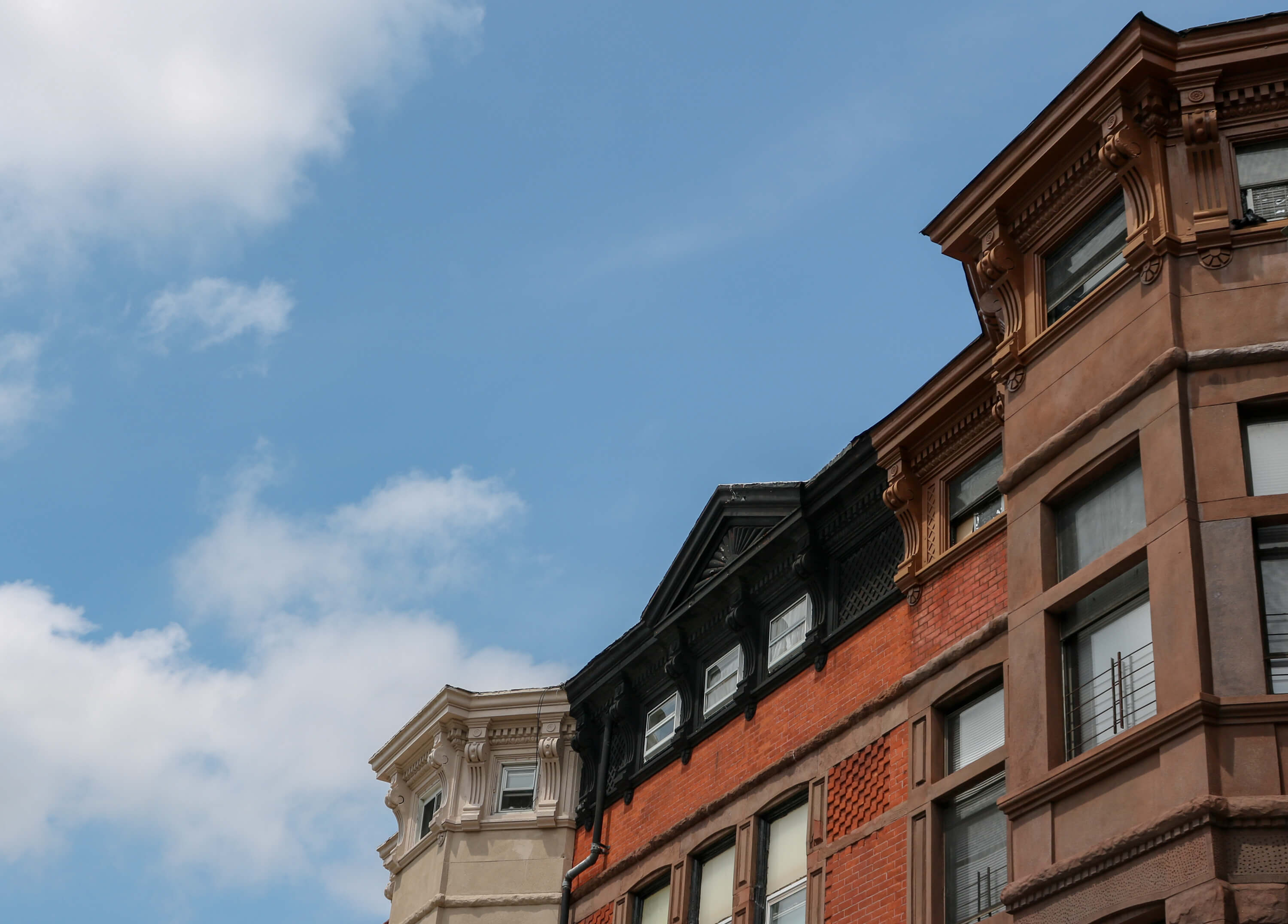
Many of this city’s builders and land speculators listed their properties through the wives, so it is not uncommon to find a woman’s name as a builder or landowner in the papers or in city records, Often the Mrs. was just a front, and she had nothing to do with the developer’s business. But there were notable exceptions.
Susanna Russell Was One of Bedford Stuyvesant’s First Developers
There are probably several unknown women who engaged in building over the course of Brooklyn’s early history, but we have no names or information readily available. Brooklyn’s first known female developer was Susanna Edith Cosey Russell, appearing on the scene in 1870. She was often the architect and builder of her projects, too.
Susanna and her husband, Walter C. Russell, were born in England. He was born around 1819, and she was considerably younger, born in the 1840s. By the 1860s, they were married and living in Manhattan, where Walter was listed in city directories as being in the “heating and ventilating” business.
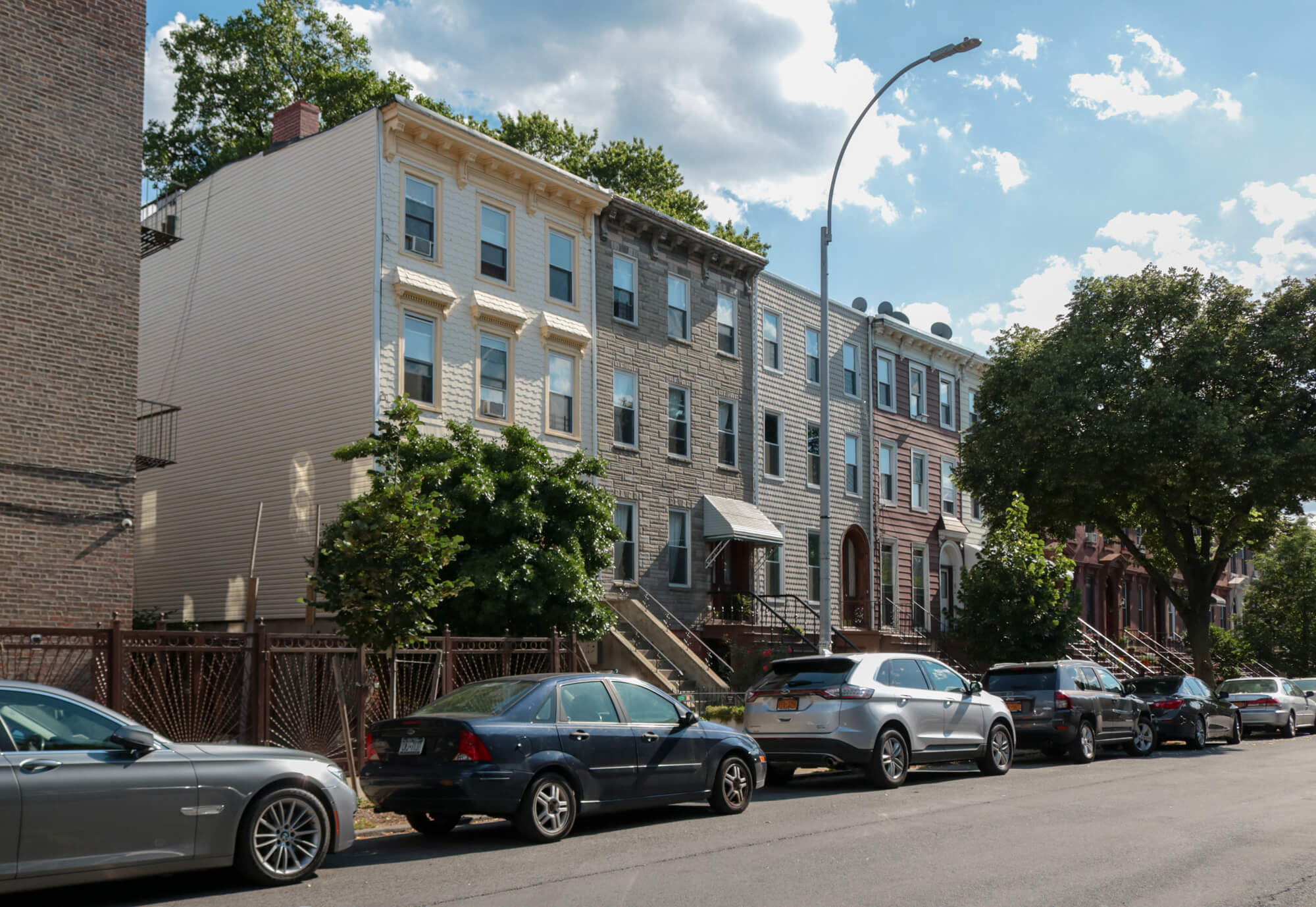
Ten years later, records show them living in Brooklyn with their three daughters. Also sharing the house were Frederick and Josiah C. Matthews, nephews of Walter, also immigrants from England, and brick masons. The brothers lived with the Russells for more than 10 years, during which time their occupations changed to “builder” and “painter,” respectively.
During that time, Walter was listed in census records as a “builder” and Susanna as “keeping house,” although the census also noted that Susanna owned real estate with a value of $20,000, a small fortune at the time. The Russells began their joint building enterprises in 1871.
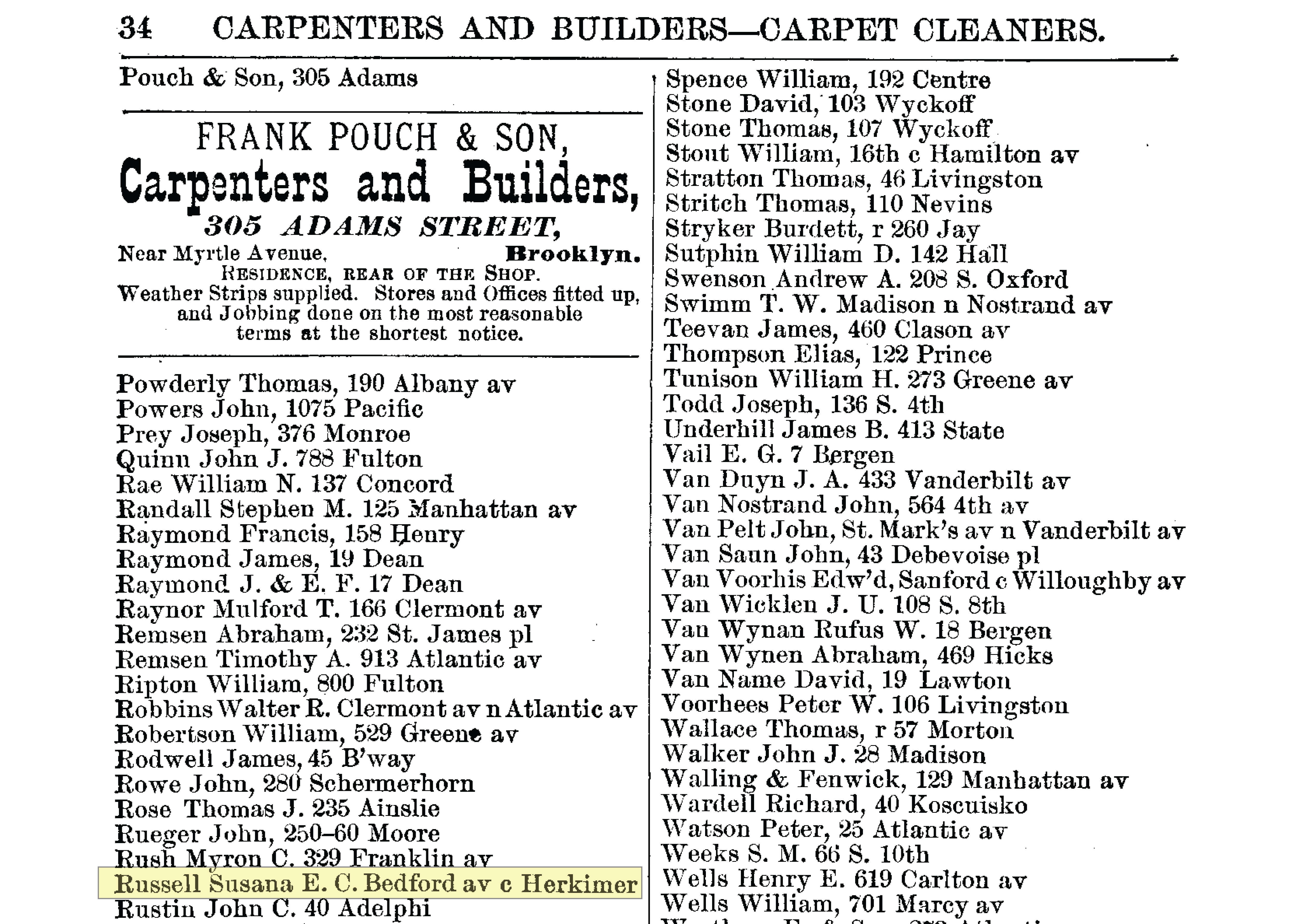
They chose to buy land in Bedford, and after initial success, continued to build in the neighborhood. They were among the first developers there, wisely investing in the neighborhood as the Brooklyn Bridge was being built and residential growth was expanding outward from downtown Brooklyn. Like those who came afterward, they helped create one of late 19th century Brooklyn’s most fashionable and upscale neighborhoods.
Not surprisingly, given the prejudices of the day, many of Susanna Russell’s permits were filed under S.E.C. Russell, obscuring her gender. Since most men were listed that way, who knew?
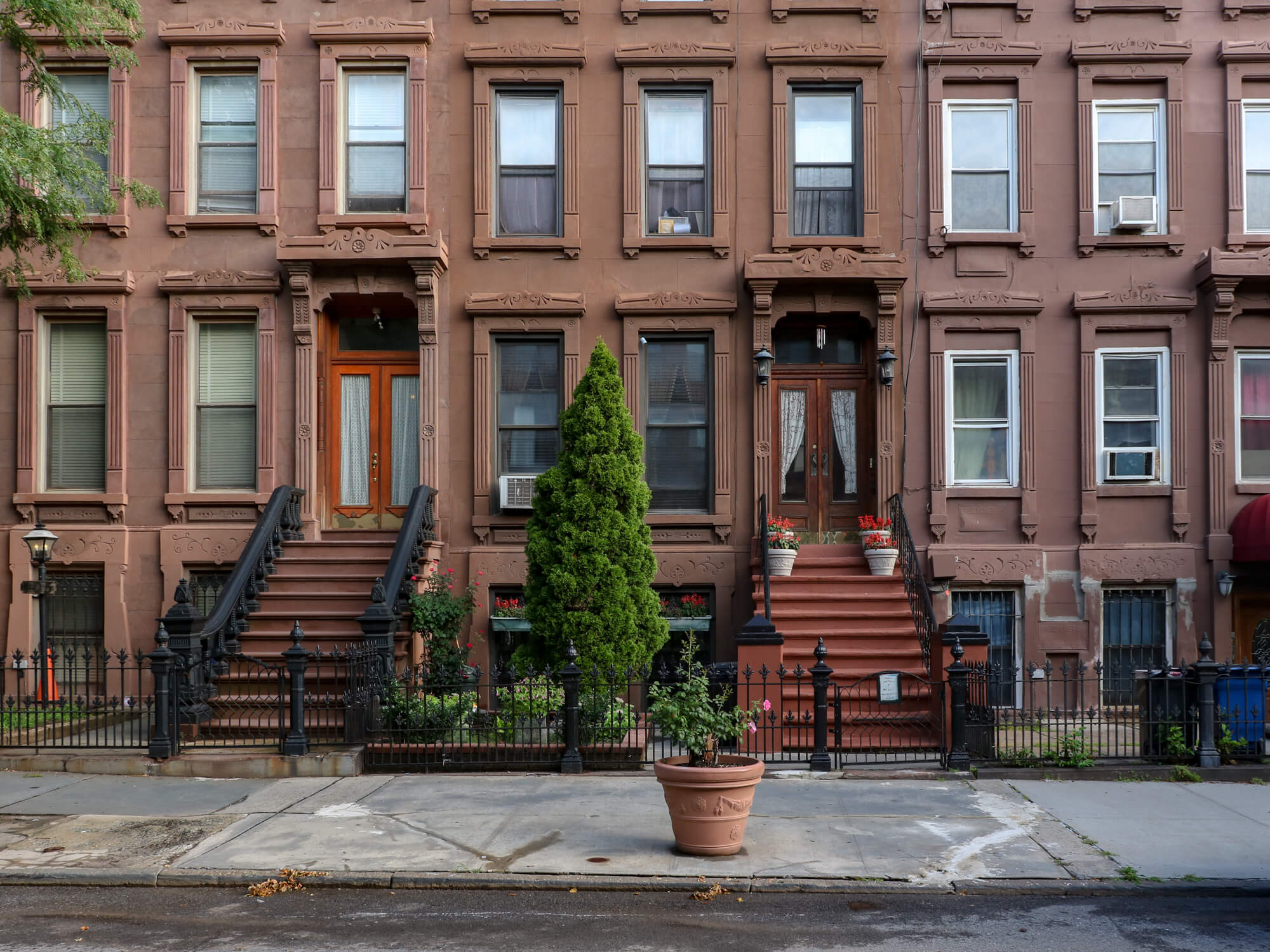
More than once, the Brooklyn Eagle listed her as Mr. S.E.C. Russell. She is listed as the “owner, architect and builder” for five rows of houses built between 1878 and 1882, and “owner and builder” of two houses designed by architect Isaac D. Reynolds. She’s listed as “owner and carpenter” for a group of houses built in 1882. She was also listed as “S.E.C. Russell, builder” in the 1880 Brooklyn city directory. Her husband had a separate listing.
All their houses and many more were built in what is now the Bedford Historic District, and are located roughly between Nostrand and Franklin avenues, from Halsey to Monroe Street. The largest groups are on Halsey, Hancock and Jefferson avenues. Groups include 70-84 Hancock Street, 101-107 Hancock Street, and 276-284 Monroe Street.
Other houses outside of the historic district have been found, including one on St. James Place in Clinton Hill, indicating they may developed many more houses than we’ve discovered so far. The Russells built primarily at a time when the Neo-Grec style of architecture predominated; their later houses are in the Queen Anne and Romanesque Revival styles.
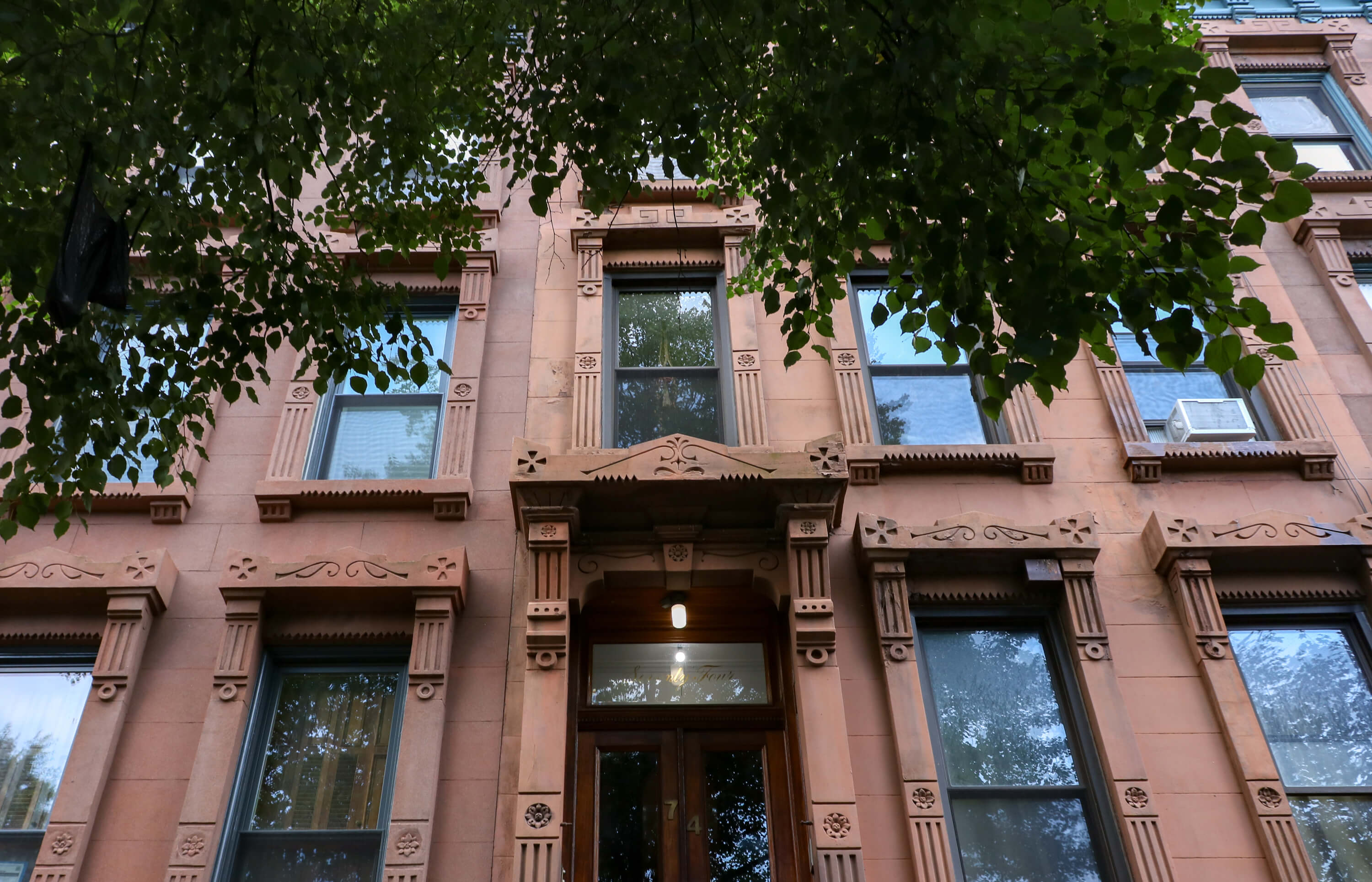
Their success must have given the Russells enough money and social standing to have been included in Brooklyn society, but they were never mentioned in the society pages. They did not publicly belong to any church or organization or political organization. Perhaps being a rare working upper-class woman was a detriment? We just don’t know.
Walter died in 1893 and Susanna died a year later. Even though we have no photos, and very little personal information, they left a wonderful legacy of buildings behind, many of which are preserved through landmarking. If the unlandmarked corridor stretching north from Putnam Avenue through Lafayette Avenue were to be properly researched, no doubt more Russell buildings would be discovered.
Susanna Wasn’t the Only One
By the late 1880s and on into the 1890s, more women appear in the records. In Bedford and Stuyvesant Heights Martha L. Swimm is the developer of record for 324-328 Putnam Avenue, built in 1882 and designed by her husband, Theodore Swimm. Emma M. Neal developed 575 Macon Street as well as other properties.
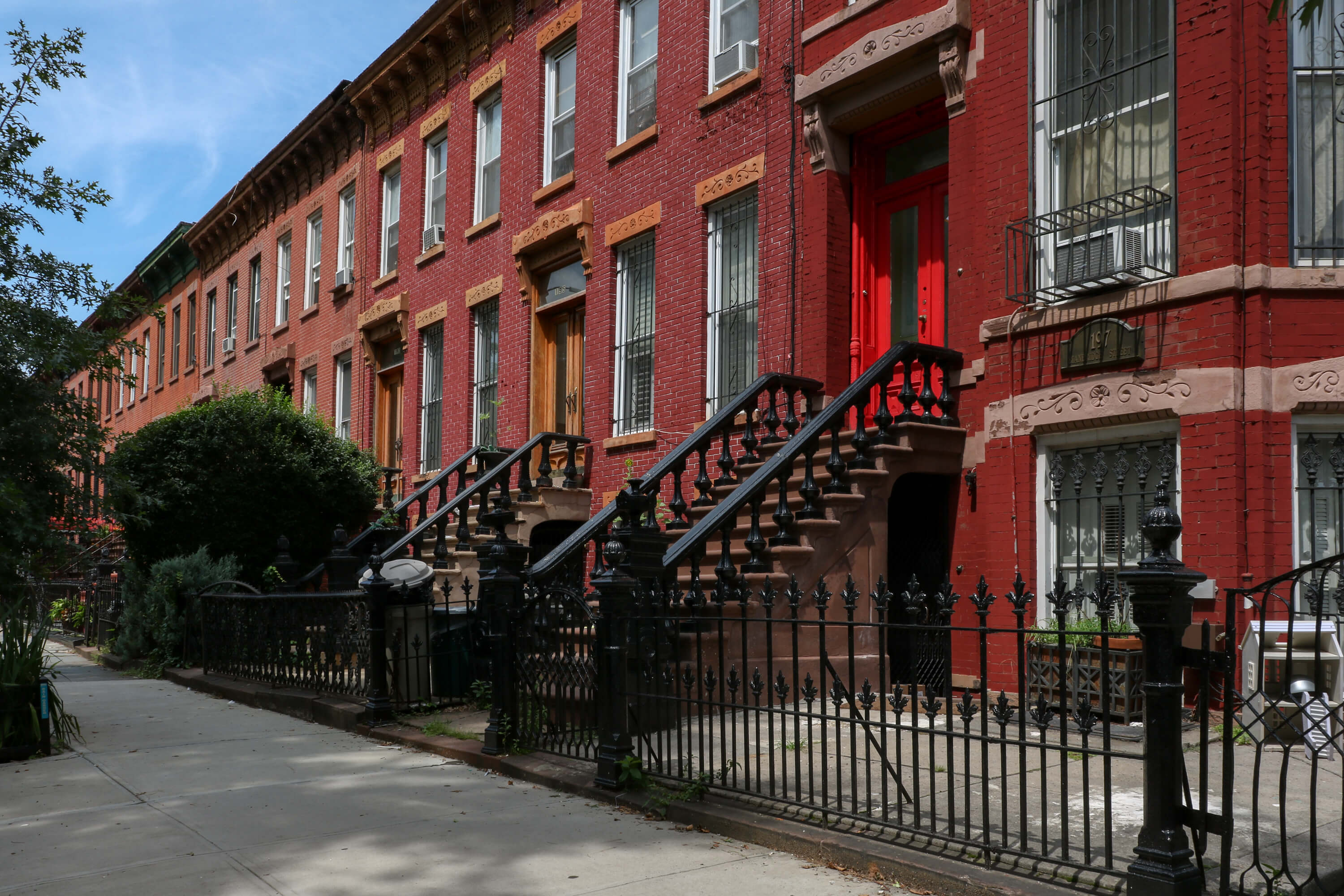
Kate Acor is the owner and developer of a group of row houses on Bainbridge Street, including 189-205 Bainbridge, as well as other houses here and there on that block. Some were owned and built by Kate and husband Lewis, while others are totally credited to her.

Also appearing in Eastern Stuyvesant Heights are developers Isabella H. Moore and Catherine Stootoff, both listed as owners and builders; Mrs. M. McKinney (owner); Hannah E. Stoutenburg, who worked with her husband, builder George B. Stoutenburg; and Mary A. DeRevere, who was in partnership with her husband, George DeRevere. Their homes appear on Decatur, Bainbridge and Macon Streets, and are mostly row houses, but also an occasional flats building.
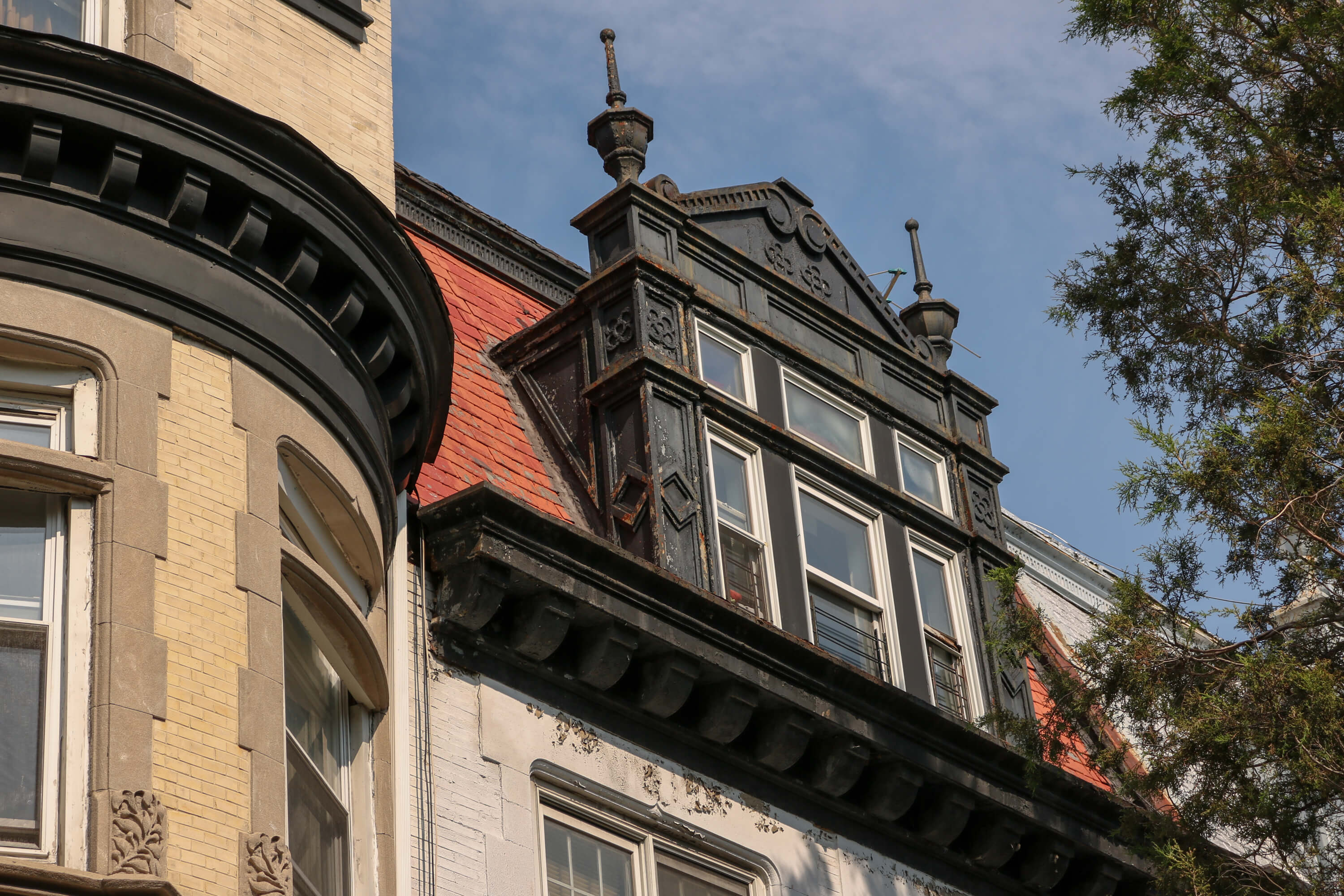
Over in Crown Heights North, Carrie Hine was partners with her husband Frederick L. Hine. They developed more than 135 houses that are now part of Phase 2 of the Crown Heights North Historic District. They include 286-298 New York Avenue between Lincoln Place and Eastern Parkway, 820-840 Lincoln Place and 939-961 St. Johns Place among many others.
Frederick was the architect, but Carrie was the business end of their business. By the time they were active, in the last decade of the 19th century and on into the 20th, the courts had gotten over their squeamishness in terms of suing women. Carrie was in court a lot. She and Frederick were great builders, with lovely homes, but they often stretched themselves too thin, and were in court many times, trying to fend off vendors’ and builders’ liens and lawsuits. They eventually left Brooklyn in the early 20th century and settled in Glen’s Falls, N.Y., where Frederick died in 1922.
The Legacy of Susanna Russell
As the 20th century progressed, it became less of a novelty for a woman to own and develop property. It was still unusual for a woman to be the architect or directly supervise construction as a builder. There were far too few women listed in either profession until we reach the end of the century. Today, it is not unusual to have female architects, although there still are far more male architects in the business. Statistics gathered by the architectural professions recently show that two out of five new architects coming into the field today are women. Women are catching up.
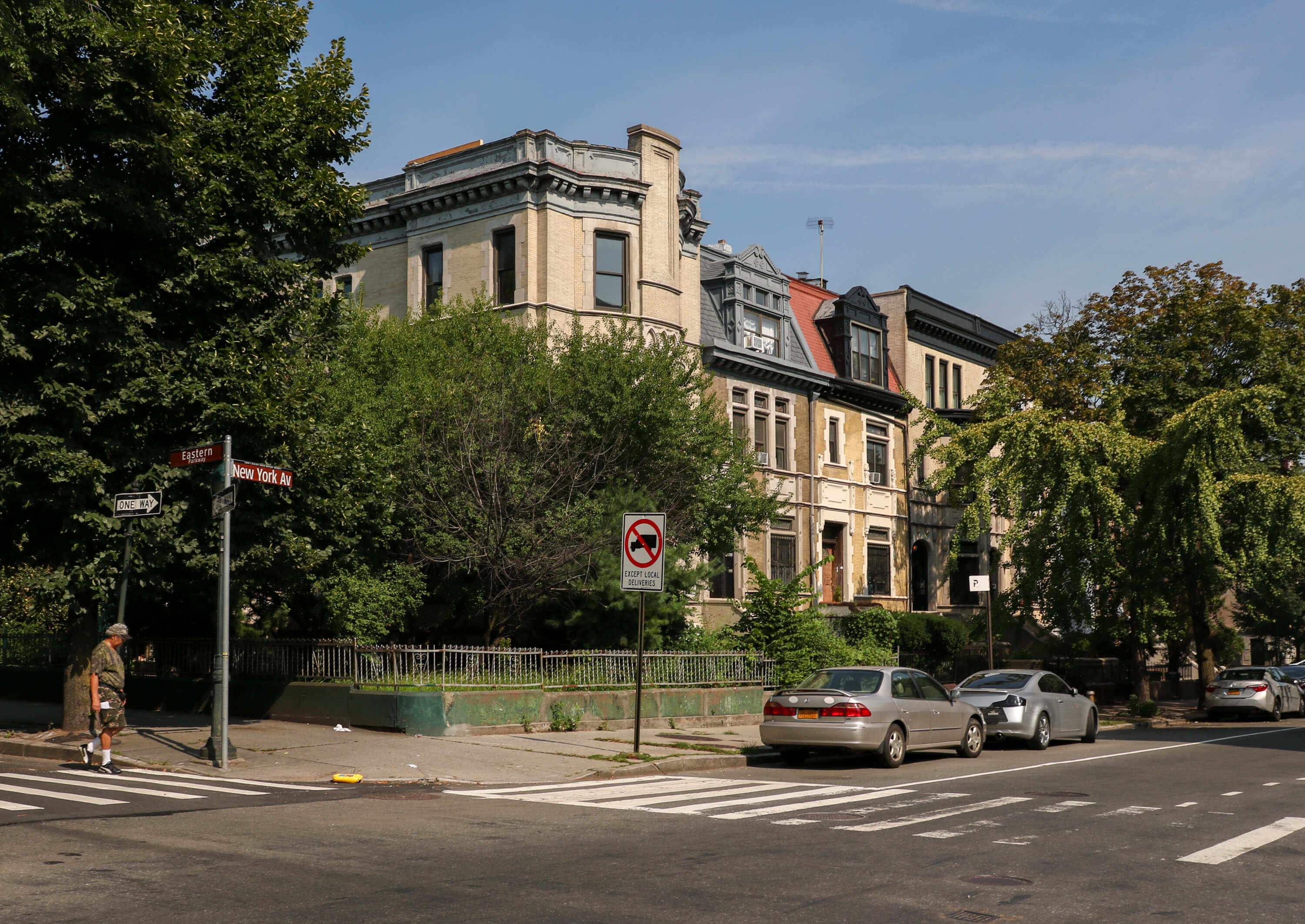
The numbers for women as real estate developers are far smaller. Most of the women who are in development are in residential development. Big commercial development is still a boy’s club. Only a few women have successfully made it big there. Here in New York, MaryAnne Gilmartin, former CEO of Forest City Ratner and now partner in L&L MAG, is probably the most successful and most well-known. She is a successor to women like Susanna Russell and Carrie Hine; they saw the opportunity, and they had the talent and drive to succeed — no matter what anyone thought.
[Photos by Susan De Vries unless noted otherwise]
Related Stories
<
ul>
Email tips@brownstoner.com with further comments, questions or tips. Follow Brownstoner on Twitter and Instagram, and like us on Facebook.





What's Your Take? Leave a Comment